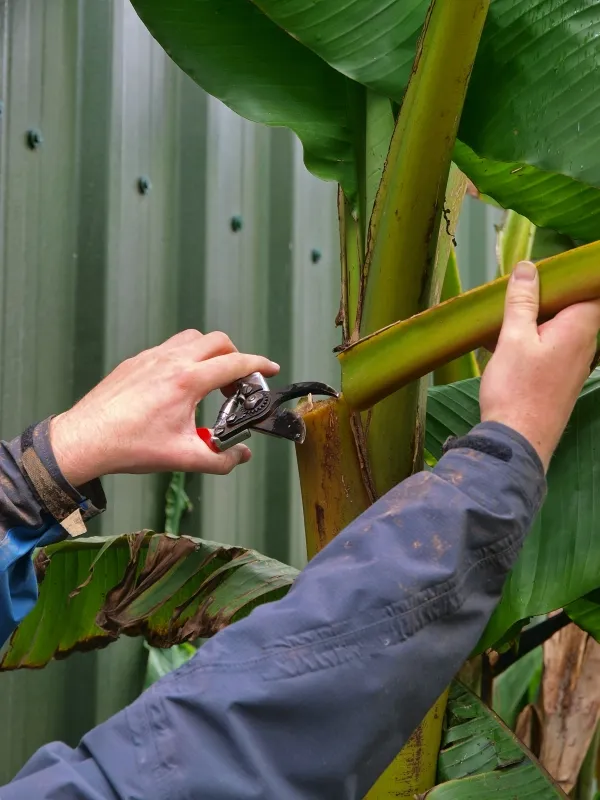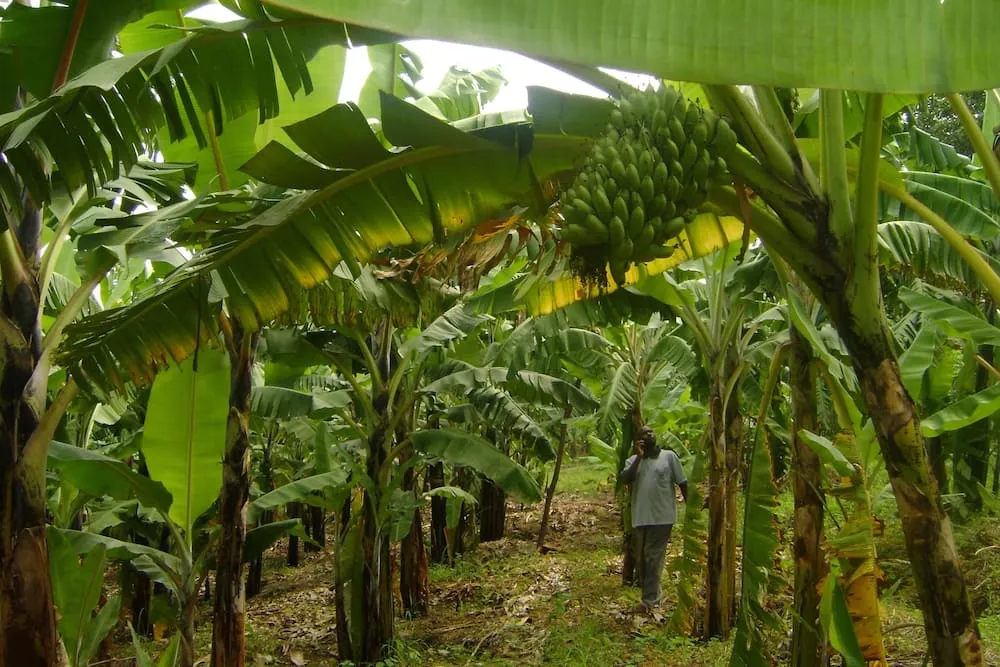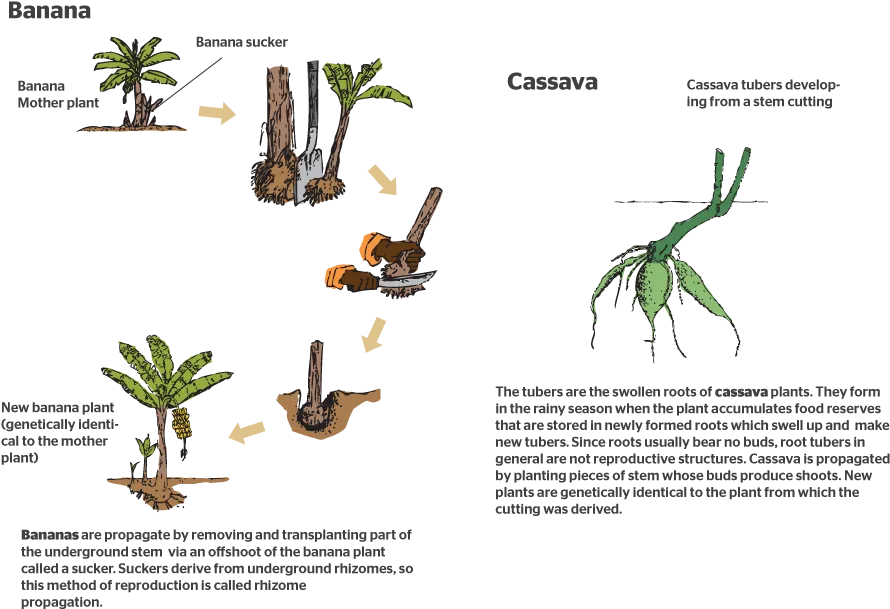A Guide to Removing Banana Trees: Tips and Techniques You Need to Know
Banana trees are a common sight in many tropical and subtropical regions, but what if you’re looking to remove one? Whether it’s taking up too much space, you’re looking to replace it with something else, or for any other reason, there are a few different methods for getting it out of the ground.

In this article, we’ll explore what banana trees are, some reasons why you might want to remove one, and the different ways you can go about doing so. We’ll also cover the best time of year to remove a banana tree and some important safety tips to keep in mind. By the end, you’ll be equipped with the knowledge you need to successfully remove a banana tree from your property. Keep reading to learn more!
What are banana trees?
Banana trees, scientifically known as Musa, are a type of perennial herbaceous plant that belong to the family of Musaceae. They are native to tropical regions such as Southeast Asia and Australia but are now widely cultivated in various parts of the world.

These trees can grow up to 20 feet tall and have large leaves that can reach up to 9 feet in length. They produce inflorescence called banana hearts which eventually develop into clusters of bananas.
Interestingly, bananas are actually berries! Yes, you read that right. Bananas are classified as berries because they develop from a single flower with one ovary and contain seeds.
Banana trees require warm temperatures and plenty of sunlight for optimal growth. They also need well-draining soil and regular watering to thrive. In addition, banana plants benefit from regular fertilization with potassium-rich fertilizers.
Aside from being a tasty fruit, banana trees also have various uses such as for fiber production, ornamental purposes or even medicine. The leaves can be used for weaving mats or baskets while the trunk can be turned into furniture or paper products.
In conclusion, banana trees are fascinating plants with many uses beyond just being delicious fruits. Whether you’re growing them in your backyard or enjoying them at your local grocery store, take some time to appreciate these remarkable plants!
Why would someone want to remove a banana tree?
While the lush green leaves and vibrant yellow fruits of a banana tree may seem like an idyllic addition to any tropical landscape, there are several reasons why someone might want to remove one from their property.
Firstly, banana trees have a relatively short lifespan, typically producing fruit for only two to three years before they start to decline in quality. After this time, the tree can become unsightly and may even pose a safety hazard if its branches begin to rot or break off.
Additionally, banana trees require regular maintenance and care in order to produce fruit. They need frequent watering and fertilization, as well as protection from pests and diseases that can damage both the tree itself and the fruit it produces. For those without the time or resources to commit to this level of upkeep, removing a banana tree may be the most practical option.
In some cases, removing a banana tree may also be necessary for environmental reasons. Banana plants are known for their ability to spread quickly through underground rhizomes (root-like structures), which can make them difficult to control in certain ecosystems. If left unchecked, these plants can outcompete native species and disrupt local ecosystems.
Overall, while there are certainly benefits to growing your own bananas at home or on your property, it’s important for individuals looking into doing so consider all factors before deciding whether or not removing a banana tree is necessary.
Different ways to remove a banana tree?

Removing a banana tree may seem like a daunting task, but there are various ways to go about it. One option is to cut down the tree using a saw or machete, being careful not to damage any surrounding plants or structures. Another approach is to use heavy machinery such as an excavator or backhoe to uproot the entire tree and its roots from the ground.
For those looking for a more eco-friendly method, manually digging up the roots and rhizomes of the banana plant can be effective. This involves using shovels and other tools to carefully remove each section of root system, ensuring that all parts of the plant are completely removed.
Another alternative is utilizing natural methods such as applying salt or vinegar directly onto the base of the tree trunk which can kill off any remaining roots and prevent regrowth. However, it’s important not to overuse these chemicals as they may also harm other plants in close proximity.
Ultimately, whichever method you choose will depend on your individual circumstances and preferences. It’s important to consider factors such as time constraints, budgetary limitations and environmental impact when deciding how best to approach removing your banana trees.
By exploring different options for removing banana trees, you can make informed decisions that align with your values while achieving your desired outcome. Whether you opt for traditional methods or more innovative approaches incorporating technology-driven solutions – there’s no one-size-fits-all solution when it comes down bananas!
The best time of year to remove a banana tree is in the winter.
When it comes to the best time of year to remove a banana tree, there are a few factors to consider. First and foremost is the health of the tree itself. If the tree is showing signs of disease or damage, it may be necessary to remove it regardless of the time of year.

The Ultimate Guide to Knowing When Your Banana Bread is Done: Tips and Tricks for Perfect Baking! »
However, if you’re simply looking to replace an old or unproductive banana tree with a new one, there are certain times of year that are better than others. In general, it’s best to wait until after harvest season before removing a banana tree.
This allows the current crop of bananas to fully mature and be harvested before uprooting the entire plant. Additionally, waiting until after harvest season ensures that any new banana trees you plant will have enough time to establish themselves before winter sets in.
Another factor to consider is your local climate. If you live in an area with mild winters and long growing seasons, you may be able to remove and replant banana trees at any time throughout the year. However, if you live in an area with harsh winters or short growing seasons, it’s best to stick with removing and replanting during warmer months when temperatures are more conducive for growth.
Ultimately, careful consideration should be given when deciding on the best time of year for removing a banana tree. By taking into account factors such as health status and local climate conditions, individuals can make informed decisions that will help ensure successful replacement planting in their gardens or farms.
Safety Tips for Removing a Banana Tree.
When it comes to removing a banana tree, safety should always be the top priority. It may seem like a simple task, but without the proper precautions, it can quickly turn into a dangerous situation.
First and foremost, make sure to wear protective gear such as gloves and eye goggles. This will help protect you from any sharp edges or debris that may come flying off during the removal process.
Next, assess the situation carefully before beginning. Look for any potential hazards such as power lines or unstable ground that could cause harm. If necessary, bring in a professional to assist with the removal.
When ready to begin, start by cutting away any large leaves or branches using pruning shears or a saw. Take your time and work slowly and methodically to avoid damaging surrounding plants or structures.
Once all of the foliage has been removed, use a shovel or pickaxe to dig around the base of the tree. Be careful not to damage any roots that may be nearby.

Finally, use either an axe or chainsaw to cut through the trunk of the tree. Make sure to stand clear of falling debris and have someone nearby in case of emergency.
By following these safety tips for removing a banana tree, you can ensure that both yourself and those around you remain safe throughout the process. Remember: when it comes to safety, there is no such thing as being too cautious!
Check out our other articles to find out even more about banana.
Removing a banana tree is something that takes some knowledge and planning. Knowing when the best time to do it, what techniques to use, and safety tips are all important elements of the process. Armed with this information you can safely take down your own banana trees and make room for new things in your garden space! Check out our other articles to find out even more about bananas so you can make informed decisions on how they fit into your personal landscape.










